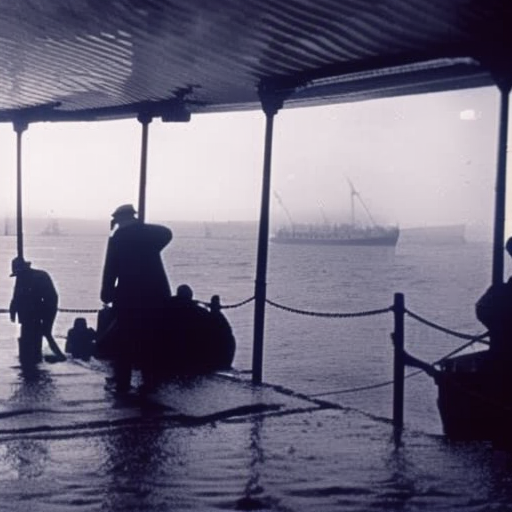Sinking of the RMS Lusitania: A Tragic Turning Point in World War I
The sinking of the RMS Lusitania on May 7, 1915, was a significant event during World War I that had far-reaching consequences. This British ocean liner, carrying both passengers and cargo, was torpedoed by a German U-boat off the coast of Ireland, resulting in the loss of over 1,100 lives. The sinking of the Lusitania played a crucial role in shifting public opinion, ultimately leading to the United States’ entry into the war.
The RMS Lusitania: A Luxurious Ocean Liner
The RMS Lusitania, built by the Cunard Line, was one of the most luxurious and fastest ocean liners of its time. Launched in 1906, it quickly gained popularity for its opulent accommodations and record-breaking speed. The ship regularly traveled between Liverpool, England, and New York City, carrying both passengers and cargo. However, as tensions escalated during World War I, the Lusitania’s fate would be forever altered.
The U-boat Threat and German Warnings
During World War I, German U-boats posed a significant threat to Allied shipping. These submarines targeted both military and civilian vessels, aiming to disrupt supply lines and weaken the enemy. In February 1915, Germany declared the waters around the British Isles a war zone, warning that any ships entering that area would be at risk of attack. The German government also published warnings in American newspapers, advising potential passengers against traveling on British ships.
The Sinking of the Lusitania
On May 7, 1915, the Lusitania departed from New York City, bound for Liverpool. Unbeknownst to most of the passengers, German U-boat U-20 was patrolling the waters off the coast of Ireland. Around 2:10 p.m., the U-boat fired a single torpedo at the Lusitania, hitting it on the starboard side. The explosion caused a second, more massive explosion, likely due to the ship’s cargo, which included munitions. Within 18 minutes, the Lusitania sank, taking hundreds of lives with it.
The Aftermath and International Outrage
News of the Lusitania’s sinking spread rapidly, causing shock and outrage around the world. The loss of civilian lives, including 128 Americans, sparked international condemnation of Germany’s unrestricted submarine warfare. The incident also strained relations between the United States and Germany, as the sinking violated international laws and norms. The sinking of the Lusitania became a rallying cry for those advocating for American intervention in the war.
Impact on World War I and the United States
The sinking of the Lusitania marked a turning point in World War I. It contributed to a shift in public opinion, particularly in the United States, where there was growing sentiment against Germany. The incident fueled anti-German sentiment and increased support for the Allies. While the United States did not immediately enter the war, the sinking of the Lusitania played a significant role in pushing the country closer to intervention.
Conclusion
The sinking of the RMS Lusitania was a tragic event that had profound consequences. It not only resulted in the loss of over 1,100 lives but also played a crucial role in shaping public opinion and ultimately influencing the United States’ decision to enter World War I. The sinking of the Lusitania stands as a stark reminder of the devastating impact of unrestricted submarine warfare and the human cost of war.












